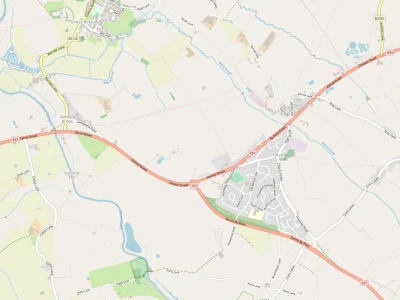Tarvin Community Woodland news:
Saving the Black Poplar
Populus Nigra
You may remember that, back on 7th April 2020, there appeared on TarvinOnLine an article about W.I. members planting a new Black Poplar tree in the Community Woodland. This was one of the trees grown by Chester Zoo as a part of a project aimed at trying to save Black Poplar trees in Cheshire. A survey of the whole County revealed that there are only about 370 mature specimens of this tree remaining and, since they are mostly mature trees, they are inevitably susceptible to being gradually lost through old age. Genetic testing has been done on just 105 of the mature trees and this revealed that, across the County, there are only 7 different clones – 4 of which are males and 3 females. Our tree is one of these females. (It might be expected that the males will outnumber females – historically male trees were planted more than females (especially in hedging), as the females will produce lots of fluffy seeds that can spoil crops or make a mess in gardens.)
That the Black Poplar in Cheshire, one of our rarest and most distinctive trees, deserves to be “saved” goes without saying. No other native tree can compare with its rugged grandeur. Its massive straight but leaning trunk often reaches 100 feet high and 6 feet thick, with heavy branches which arch and sweep downwards. The trunk and boughs are covered with great bosses, the bark is very deeply ridged and appears jet black at a distance (hence the name of the tree). However, while finding a home for a tree does help their preservation in the short term, it does nothing towards helping the species in the long term. To do that requires trees to be able to produce their own viable seed which can then germinate and produce new seedlings – the adult trees of tomorrow. For that to happen, a male Black Poplar tree must be planted upwind of the female tree and both trees cared for until they reach an age at which they can produce catkins. Male catkins are crimson and appear on the male tree in late March or early April. Female catkins, which are yellow-green and develop on the female tree, appear shortly afterwards.
If Tarvin Community Woodland is to play a real part in the preservation of Cheshire’s Black Poplar trees, we must be more than just a museum in which to house one of Chester Zoo’s specimen trees. It is for that reason that Trustees have decided to purchase a young male Black Poplar tree and an exceedingly generous resident from Crossfields has provided us with the necessary cash. With the prevailing wind blowing from the West, it must be planted at a short distance from the female tree and closer towards the Townfield Lane gateway.
Buying this Black Poplar tree will be a truly exceptional case. Tarvin Community Woodland already has too many trees and an amount of thinning will be inevitable as the woodland develops. Trustees are minded to adopt a rule that, for any new tree to now go into the woodland, one of the existing trees should be removed. In his book, ‘The History of the Countryside’, Oliver Rackham makes an excellent point: “Too much attention and too much money goes into the automatic and unintelligent planting of trees. Tree planting is not synonymous with conservation, rather, it is an admission that conservation has failed.” For our conservation work to succeed, perhaps we ought now to say that Tarvin woodland does not need any random new trees. Any trees which are planted must be for a particular purpose and a space for them to be planted in and TO GROW INTO must have been arranged.
And what, you might say, of the seedlings of Black Poplar that we are hopeful of eventually producing? If we are successful and seedlings do appear, then they will go off to other places in Cheshire, in order to further help the Chester Zoo project. Perhaps then Tarvin Woodland will be doing its bit to help conservation on a wider scale!
Quick Links
Get In Touch
TarvinOnline is powered by our active community.
Please send us your news and views.











